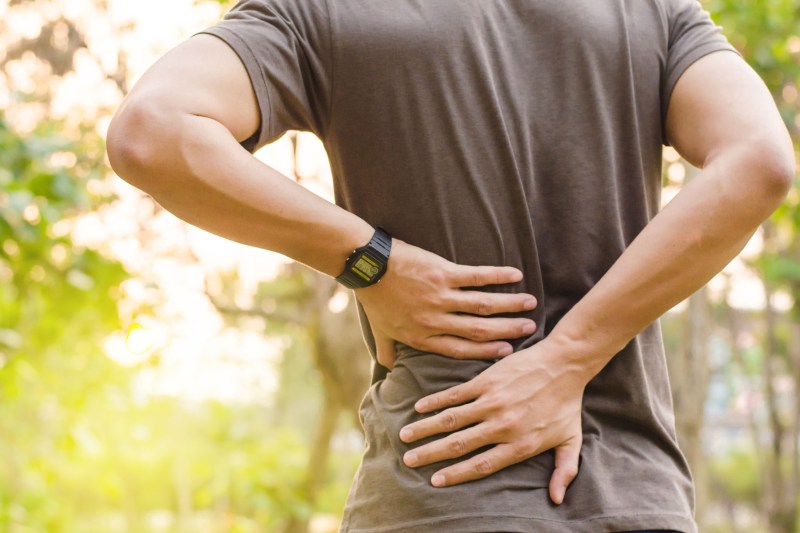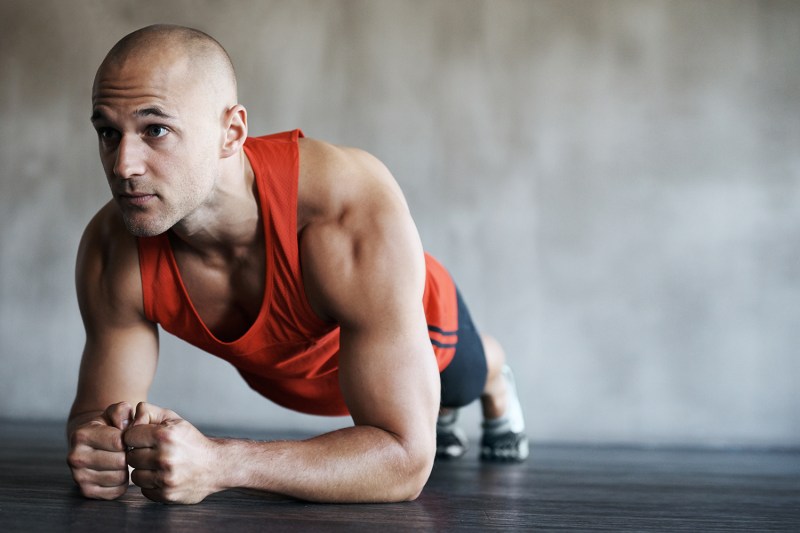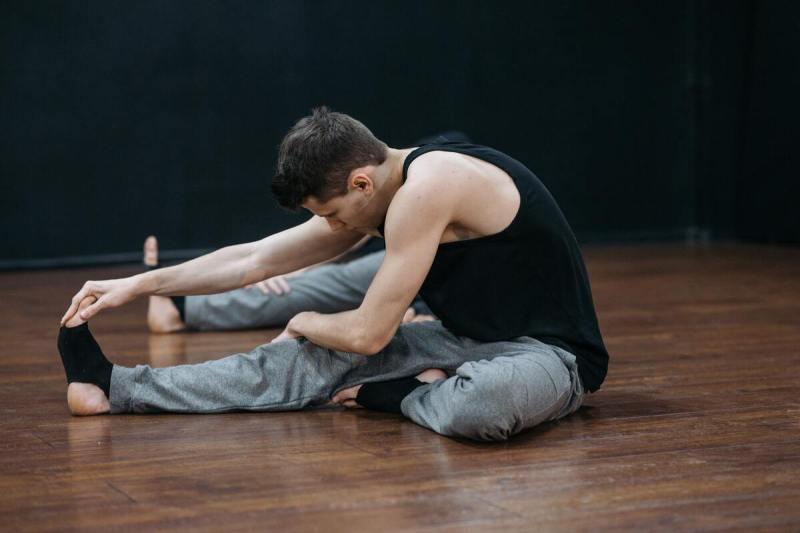
So many people live with painful back issues, especially lower back pain. It’s a common complaint and can make everyday activities difficult. Exercising and stretching may help ease back pain and prevent further discomfort.
It is recommended that you contact your physician before you begin any new exercise regimen. Inquiring with a physical therapist or fitness coach is also a great idea. This helps to ensure you’re using the proper form with both exercises and stretches and will not strain yourself in a way that could make your back feel worse.
In the beginning, start slow and repeat each stretch or exercise a few times. Gradually increase how often you do each movement as it gets easier. You may not feel like beginning an exercise program with a back injury, but if you include members of your healthcare team, you can find stretches for lower back pain that help you feel better.

What back issues can get in the way of exercise?
Spinal discs naturally wear down as you get older. Encourage your doctor to investigate every potential cause of why this is happening, from stress to spine conditions to a sedentary lifestyle. Then, they can create a customized treatment plan based on your condition.
Many people with “bad backs” don’t feel like moving around. That’s understandable. However, if you suffer from nonspecific back pain and show no neurological symptoms, exercise and stretching can be effective treatments.

Best ways to exercise with back issues
Elliptical
Ellipticals are not recommended for people with serious back issues. However, if you have some mild lower back pain, these machines move your upper and lower body without much stress on your joints, which can further exacerbate back issues.
Keep your feet fixed on the pedals, gently moving forward and backward. Since they don’t touch the ground, these movements keep you gliding without impacting joints, ankles, and knees.
Stationary bike
Mastering good form on a stationary bike can help alleviate back pain. Too many cyclists slump and crunch down. Instead, push your chest forward and pull your shoulders back.
Keeping your arms long and straight is also important. If you’re in a cycling class, a good instructor will remind you to readjust your form periodically. This typically involves lifting your butt off the seat and tilting your hips forward to keep a straight line from your head down to your hips.
Swimming
Swimming can be one of the best back workouts or ways to exercise without causing your back pain to get worse. It may even help make it better. Again, utilize someone with experience who can observe and make sure you’re using the proper form.
Backstrokes place less stress on your spine and strengthen abdominal muscles. If you prefer the popular freestyle, work on smooth extensions so you don’t jerk your neck. The breaststroke is often the best movement for those with lower back pain because you’ll build muscle tone without overworking your spine.
Walking
Walking is a great activity, as long as you do some stretches both before and after your walk. To prevent injury, walk with the correct posture. Follow some of these tips to ensure proper form.
- Look forward with your head up.
- Push with your rear leg.
- Keep your shoulders back, chest up, and stomach in.
- Roll your shoulders naturally when you take your steps.
- Keep your hips level when you walk.
- Engage your core muscles to maintain balance.
- Make sure your feet hit the ground heel-first and then roll through to the ball of your foot.
- Push off with your toes while avoiding flat steps or striking the ground toe-first.

Bodyweight exercises
Planks
Planks strengthen your core muscles and your back at the same time. The idea is to stay firm and avoid sagging. This means you should feel some lift in your butt while contracting your core muscles.
To start, get into a push-up position but on your elbows. Keep your hips and shoulders in line while relaxing your shoulders. Your shoulder blades should always be wide on your back. This is easier if your elbows stay aligned with your shoulders.
Maintain this position for 30 to 60 seconds, and try to increase the duration as you get stronger.
Glute bridges
Grab a mat and lie down on your back. Keep your knees bent and your legs hip-width apart.
Engage your abs and press your heels gently into the floor.
Slowly raise your hips while gently squeezing your glutes. Be mindful so your hips don’t go too high. This will help you avoid overarching and straining your back.
Hold the bridge for a few seconds before slowly lowering your body back down to the starting position. Perform three sets of 12-15 reps.
Bird dogs
Place a flat cushion on your mat and under your knees for extra cushioning. Use a mirror or partner to ensure proper alignment.
Get into the tabletop position. Make sure your hands are under your shoulders and your knees are under your hips. Keep your spine neutral and your abdominal muscles engaged.
Bring your shoulder blades together. Raise your right arm and left leg straight out while keeping your shoulders and hips parallel to the floor. Lengthen your neck while tucking your chin into your chest to look at the floor.
Hold this for a few breaths, then raise your left arm and right leg. Hold that position for a few more breaths. Return to the start and begin again. Repeat for ten reps on each side.

Should I stretch when my lower back hurts?
Yes, lower back stretches may relieve pain. However, if you feel uncomfortable when moving through gentle stretches, see your physician to determine the cause of that pain.

How do you stretch out severe lower back pain?
Cat-cow stretch
The cat-cow stretch helps ease tension in your lower back and core muscles while building flexibility.
- To start, get onto your hands and knees. Keep your knees hip-width apart.
- Pull your belly button up toward your spine. Drop your head forward like a cat. Hold for several breaths.
- Raise your head and let your pelvis gently fall forward. Curve your back down toward the floor like a cow. Hold for several breaths and repeat 5-10 times.
Seated hamstring stretch
A common contributor to lower back pain is hamstring trouble. Regularly stretch your hamstring muscles to release tension in your spine.
- Sit on the floor and keep one leg straight out in front. Loop a small towel or exercise/resistance band around your heel.
- Gently bend forward at the hips. Bring your stomach to your thighs while keeping your back straight.
- Use the towel or band to inch closer to your legs. Stretch for several breaths. Rest and repeat three times.
Knee to chest stretch
Effective back exercises like this, done properly, can help lengthen your lower back and relieve pain.
- Lie on your back with your knees bent. Keep your feet flat on the floor.
- Grab your right lower leg with both hands. Clasp your wrists or interlace your fingers under the knee. Gently pull your right knee to your chest while keeping your left foot flat on the floor.
- Hold for a few breaths and feel your lower back slightly stretch. Relax your lower back, hips, and legs. Return to the start and repeat three times for each leg.
Belly flop stretch
The belly flop stretch will decompress your lower back through supported elevation.
- To get started, roll up a small towel lengthwise. Place it horizontally in front of you. Lie on your belly over the towel, and keep your hip bones from pressing into it.
- Relax as you turn your head to either side. Stay in this position for several breaths and repeat three times.
Frequently asked questions
What is the fastest way to relieve lower back pain at home?
Cold and heat therapies are the fastest way to relieve lower back pain at home. Use cold compresses or ice packs immediately following a back injury. This numbs the area and reduces swelling. Afterward, a hot water bottle or blanket can provide comfort.
How do I loosen my lower back and hips?
Lie flat on a firm bed mattress or exercise mat and lift both knees to your chest. Hold your knees gently with both hands for several breaths. Then, return both legs to the start and repeat three times.



